There’s nothing quite like a stroll through nature to boost your wellbeing! Simply feeling the warm glow of the sun on your face in summer, or the crunch of burnished orange leaves underfoot in autumn, can instantly lift your spirits.
It’s something many of us grew to cherish during those long months of lockdown; the daily walk giving us the opportunity to appreciate the sights, sounds and smells of nature, take in the lush greenery of plants and gain a sense of perspective (away from those incessant Zoom meetings!).
This innate desire to connect with nature and other living beings is known as ‘Biophilia’. It’s a term that was first coined by psychologist Eric Fromm in 1964, who defined it as ‘the passionate love of life and of all that is alive’.
It transpires that (rather cleverly) our brains are evolutionary preconditioned to hunt out those natural environments which benefit mind, body and soul.
The concept of biophilia is increasingly being incorporated into office interior design, as architects, designers and employers cotton onto the wellbeing benefits for employees, who may need tempting out of the ‘work from home’ bubble.
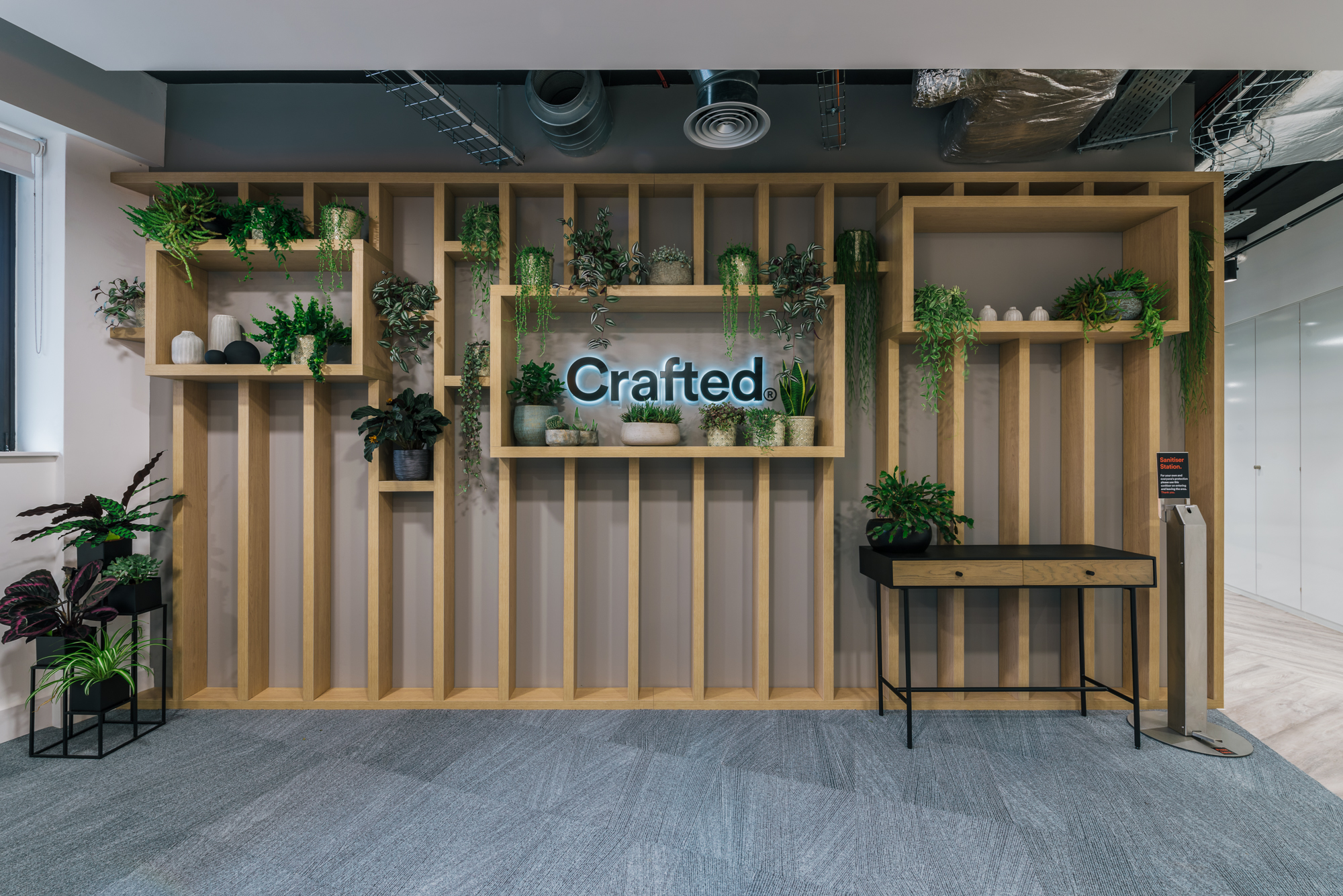
Biophilic design is a way to connect people to nature within built environments such as offices and laboratories, to foster feelings of wellness. In its simplest terms, it is the practice of ‘bringing the outside in’.
Katie Oldknow, Head of Design at COEL, explains: “Biophilic design is a key wellness principal of ours, reconnecting people with nature. Creating a calmer, creative, considered healthy workspace, all whilst supporting people to be more engaged and thus productive.”
In office design, this can be done in a myriad of ways, including incorporating plants, water, and abundant natural light to maintain this bond with nature, which supports cognitive function, psychological wellbeing and physical health.
Biophilic design in the workplace can also feature representations of elements found in nature, such as artwork which mirrors environmental patterns or shapes (leaves or flowers, for example) or diffusers that spritz the air with aromatic scents of lavender or herbaceous basil to stimulate a positive olfactory response.
Ruscha Fields, owner of The Good Plant Company, who regularly collaborates with COEL, to bring uplifting plants and greenery to offices in and around Cambridge, is passionate about biophilic design.
“The heart of our wellbeing is nearly always connected with some aspect of nature. So, if we want to increase our wellbeing, one good way of doing that is to increase our proximity to something that either is natural or mimics nature, to give us that feeling of being in nature,” she explains.
“That could be a beautiful wooden floor, a view out of a window at some gorgeous trees, a painting depicting nature or in our case bringing plants inside the workplace, as well as outside.”

Biophilic office design has so many health benefits, we’re not sure where to start with extolling its virtues! But we’ll give it a go.
Sustainability consulting firm, Terrapin Bright Green, says: “Biophilic design can reduce stress, enhance creativity and clarity of thought, improve our wellbeing and expedite healing.”
But how does it work?
First up, the addition of plants to an office environment significantly improves air quality, absorbing toxins and airborne nasties, as well as putting water vapour back into the air. This means employees are less susceptible to viruses, allergies and respiratory issues such as asthma.
According to research by the US Joint Commission, 40 per cent of all sickness absence can be attributed to indoor air pollution or poor air quality, so those plants are truly wondrous office colleagues!
COEL’s Katie Oldknow explains that plants also help generate feelings of equilibrium and calm in employees: “By embracing the use of planting in our workspaces – whether it’s architectural monstera, palms or fig tree planters, decorative island gantries with trailing plants or built environments with green walls featuring foliage or moss – we create a sense of harmony and balance and enhance our connection with nature.”
Office design which embraces the principles of biophilia is also likely to boost staff productivity as a profusion of natural light leads to a rise in feel-good hormone, Serotonin.
According to UK mental health charity Mind, being in close proximity to green spaces and ‘bringing nature into everyday life’ can massively benefit your mental health too, helping to reduce feelings of stress or anger.
As alluded to in the Terrapin Bright Green research, biophilia can even help to heal. In a study by Seong-Hyun Park and Richard H. Mattson, having a window looking out onto living plants helped speed up the healing process of post-op patients in a hospital, as did having ornamental plants placed in their room.
Finally, the biophilic office design trend can be a morale-booster for staff, engendering feelings of satisfaction.
“In a post covid world, the retention of staff is absolutely key, so there’s much more emphasis on looking after employees,” says Ruscha, of The Good Plant Company. “Employers are looking at how to entice staff back into the office by creating a more natural environment which feels welcoming and inspiring.”
1. PLANTS
Create a positive and welcoming environment by adding a variety of plant life to your office design.“Beautiful plants can really soften what can often be a slightly stark, clinical environment, promoting feelings of warmth and relaxation,” says Ruscha.

“A big trend is to mix different types of plants together, to make planting appear more nature-like so as you look at a display your eye is taken from one leaf to the next.”
Although potted floor and desk plants have their place, you can be inventive in your installation. Make the most of high ceilings with floating baskets suspended at different heights for a more natural aesthetic. Or hang pictures frames around living plants.
Create wow-factor by installing a living wall, covered in florals or verdant moss; this can double up as an office partition. And we recommend employing technicians to administer aftercare to ensure your green-fingered investment continues to flourish.
2. NATURAL LIGHT AND SPACE
Create dynamic and energising spaces by maximising natural light exposure. This can be achieved through plentiful windows, skylights, light wells and an open-plan office design.

If there isn’t a surplus of natural light, circadian lighting systems, which change in colour, temperature and illumination throughout the day, simulate the conditions that occur in nature (ensuring staff continue to feel energised).
Yale Center for British Art in Connecticut, is a great example of dynamic and diffuse light, as its differing orientations of windows, skylights and a large central atrium allows for light to penetrate at variable levels, as in nature.
3. PATTERNS OF NATURE
Reinforce the connection with the great outdoors by incorporating the shapes and textures of the natural world throughout your office design.

Biomorphic forms and patterns, from flowers and waves, to shells and butterflies, can feature in office furniture, railings, window detailing, floor mosaics, bannisters or acoustic panelling.
For a simple fix, include nature-themed artwork such as honeycomb-shaped wall tiles covered in moss, or artificial foliage wound around columns.
4. WATER FEATURES
Workspaces located close to rivers, oceans, docks or canals are said to make employees feel more creative (well, who doesn’t feel inspired by the rhythmic sound of waves crashing onto sand and rock?).
If your office is located amid a concrete jungle, create an outdoor water feature, which employees can view through glass windows. Or bring water-inspired elements inside, by introducing fountains, water walls or fish tanks, for a calming environment.
Even painting walls a shade of blue, simulating the reflection of water on another surface or playing a soundtrack of soft trickling water can help employees feel reconnected with nature.
5. NATURAL MATERIALS
Incorporate materials reminiscent of nature into your interior design and office furniture such as wood, bamboo, leather, stone, rattan, cork, and ceramic.Using natural and recycled materials has the added bonus of helping businesses work towards sustainability goals, such as achieving net-zero status.
Also, plump for colour palettes that mimic nature; perhaps a subdued blend of earthy greens, soft browns and natural beiges, or at the other end of the spectrum, pops of sunshine yellow and sky blue.
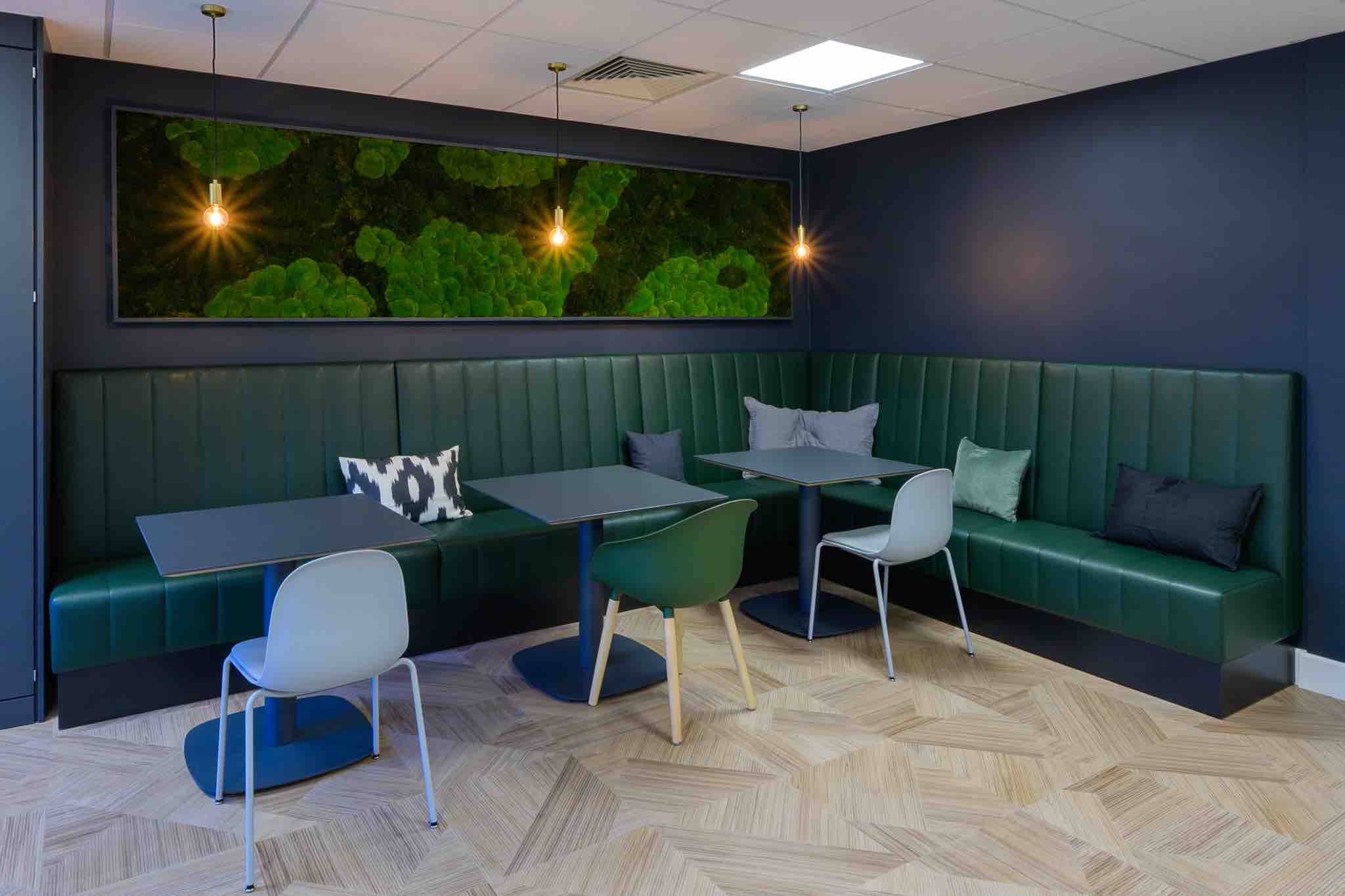
6. SOUNDS AND SCENTS OF NATURE
Recreate the sensations of being in nature by incorporating auditory and olfactory elements into your office design, such as playing bird song or diffusing essential oils.
Exposure to nature sounds can help reduce stress levels and leave you feeling decidedly zen; a great mindset for decision-making!Mimic nature’s voice with interactive features such as diffusers which spritz fragrant cedarwood, rosemary (said to improve memory) or lavender (associated with reduced mental stress) aromatherapy oils.
Simultaneously play a soundtrack of rustling trees, to keep employees stimulated.
7. BIOPHILIC ‘ESCAPE ROOMS’
Continue the biophilic ecosystem throughout the building, creating focal point rooms. Toilets, which can be cold and utilitarian, can be elevated by adding thriving plants and nature inspired art as well as painting walls in a colour scheme that evokes nature, such as sea blue or grass green.
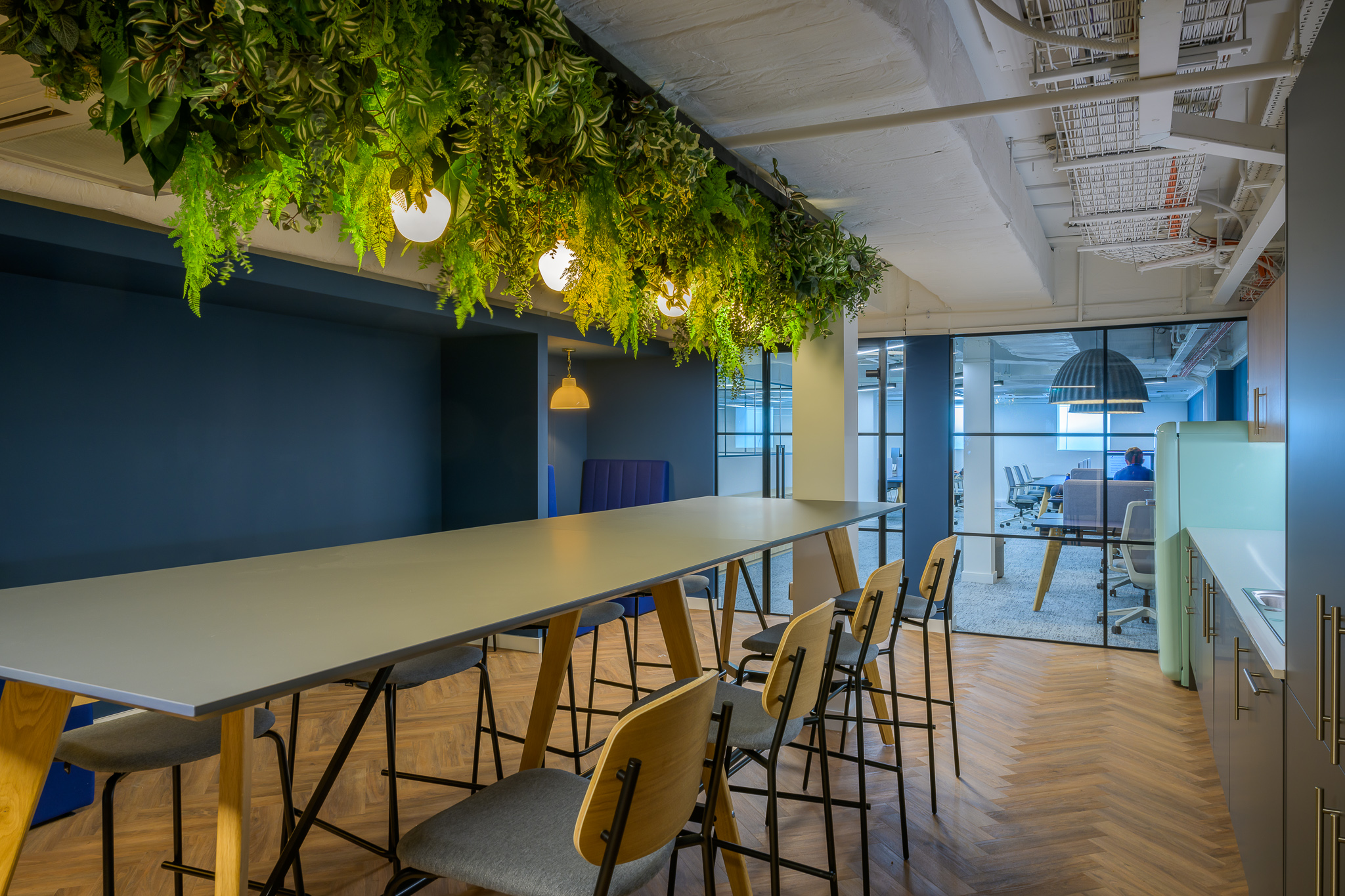
The kitchen is another great ‘escape room’ where employee wellbeing can be bolstered by introducing edible plants like chives, basil and parsley. Staff can nurture the herbs, to promote a feeling of achievement and add a few sprigs to their lunchtime salads, revelling in the flavours of nature.
8. VARIABLE AIRFLOW
Generating subtle changes in air temperature, humidity, and airflow can simulate natural environments, improving mood, concentration and overall employee wellbeing.
Install operable windows to allow fresh air to flow and add window treatments to shield your workplace from extreme outdoor temperatures. If opening windows aren’t an option in your office design, mechanical ventilation systems can create natural airflow variations.
Outdoor spaces are super important in biophilic design too, giving employees direct access to fresh air and time-out opportunities. Ideally, ensure these have protection from the elements, so employees can enjoy them whatever the weather.
9. VIEWS OF NATURE
Viewing bucolic scenes of nature triggers the pleasure receptors in the brain, so if your workplace has an idyllic outlook, ensure your employees have an unencumbered view (as much as possible). Do this with open plan design, balconies, glass facades and staircases made from transparent materials.
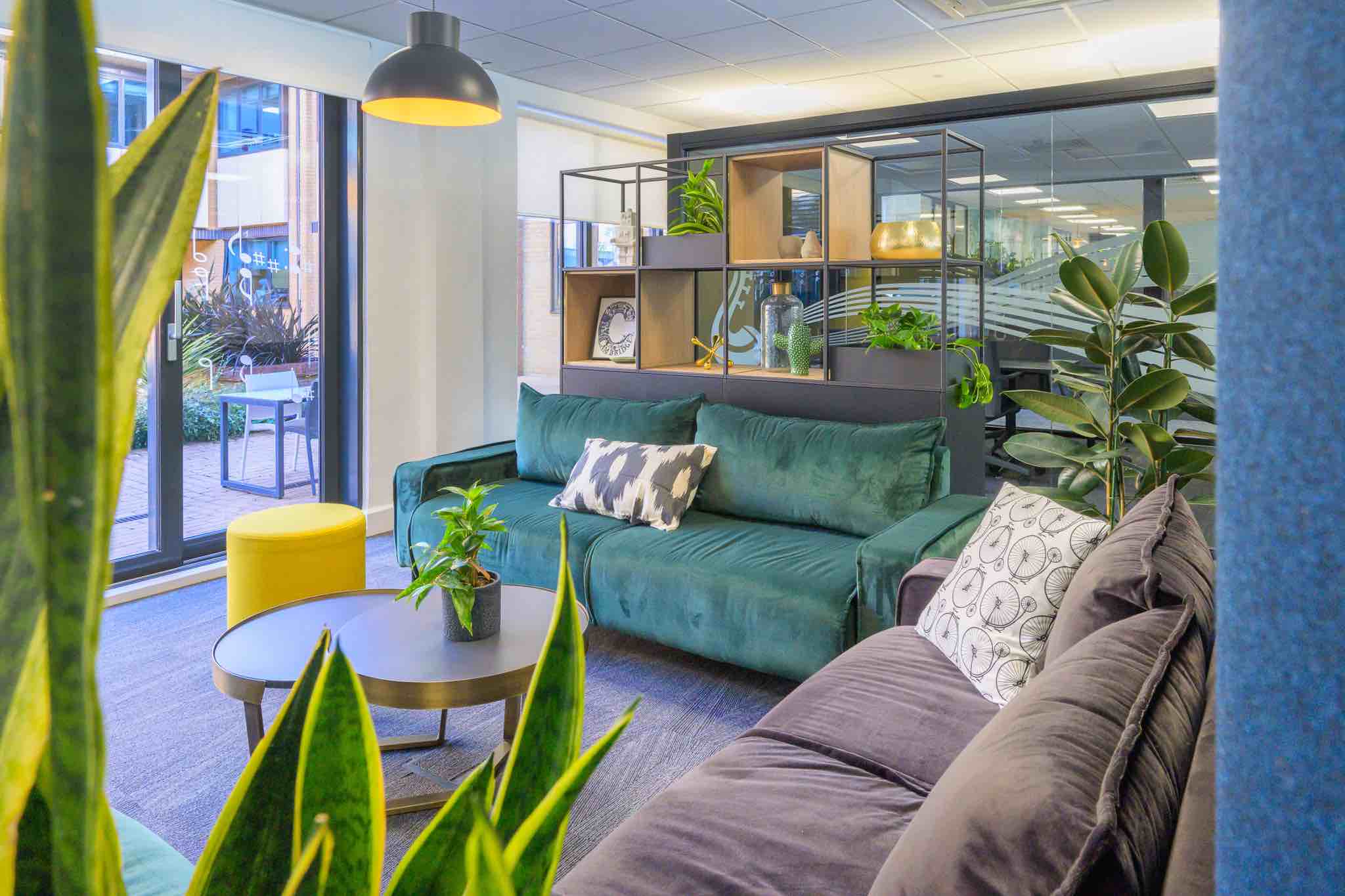
If the view is uninspiring, you could grow wisteria around a pergola seating area, or install an outdoor water feature? Alternatively conjure up nature indoors, in the ways we’ve previously discussed, or run video depicting inspiring outdoor vistas.
10. A PLACE OF REFUGE
Incorporating refuge areas is a key component of biophilic office design as employees need a retreat for rest and recuperation. To accommodate this, you can use soft seating and dividers, high back chairs and overhead trellis, so employees feel protected and cocooned.
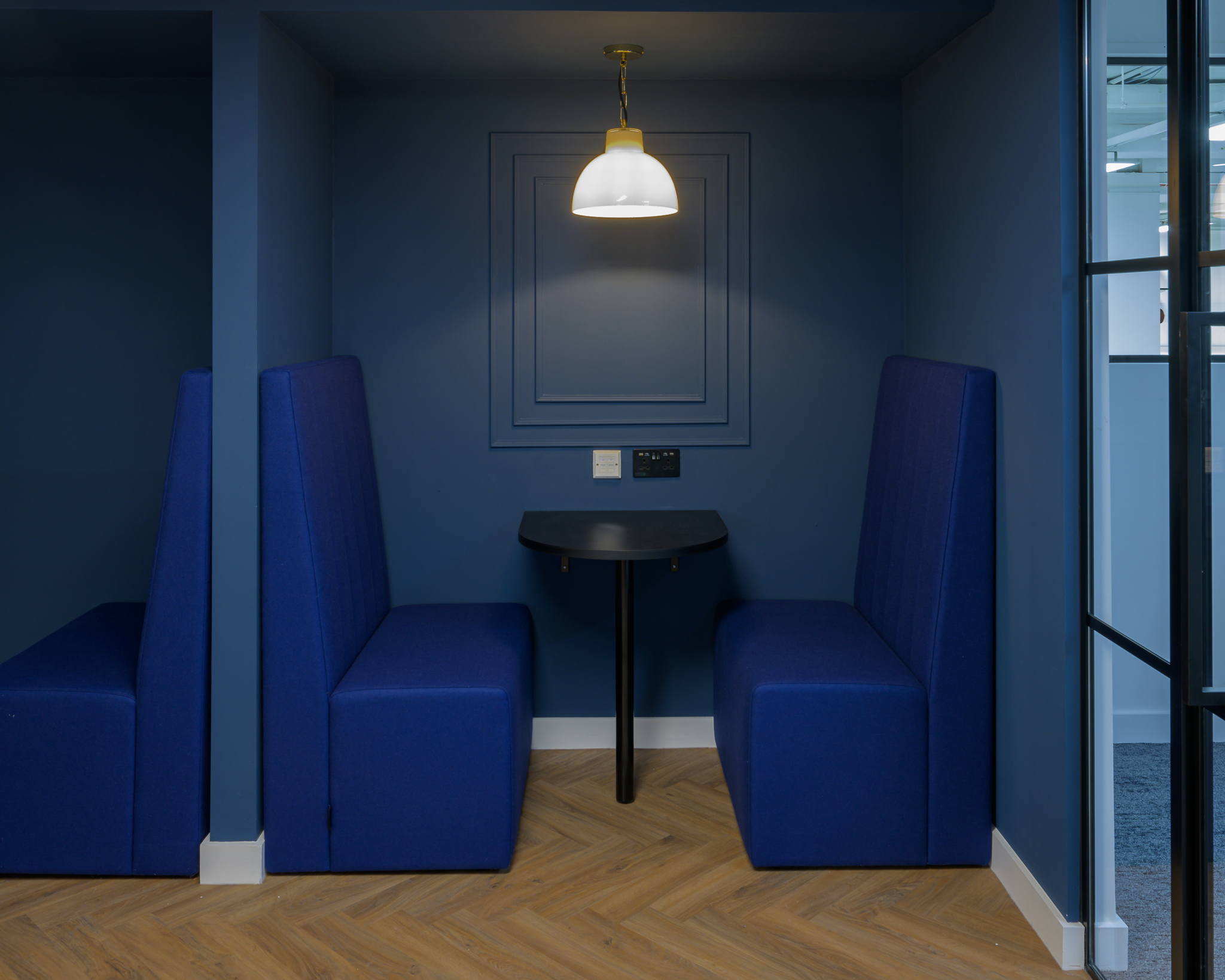
Other options include reading nooks, booth seating, canopy beds, sleeping pods, private offices and even tree houses (should you have the space!). Lowered or varied colour lighting can help set a calming tone.
We’ve discussed how to incorporate biophilia in your office design, and at COEL we think it’s important to be aspirational, so here’s a few of our favourite examples of this burgeoning trend:
The Spheres Building in Seattle. An extension of Amazon’s HQ, this features three epic biodomes housing around 40,000 plants, including exotic plant life, rare begonias and even a rhododendron normally only found on the top of a mountain in the Philippines. Up to 800 employees can enjoy this incredible natural environment at a time.

Bloomberg’s London HQ features a fabulous fish tank on its sixth floor, which was awarded the prestigious RIBA Stirling Prize for architecture in 2018. Founder and owner Michael Bloomberg apparently attaches great value to the staff benefits of this ‘blue space’.
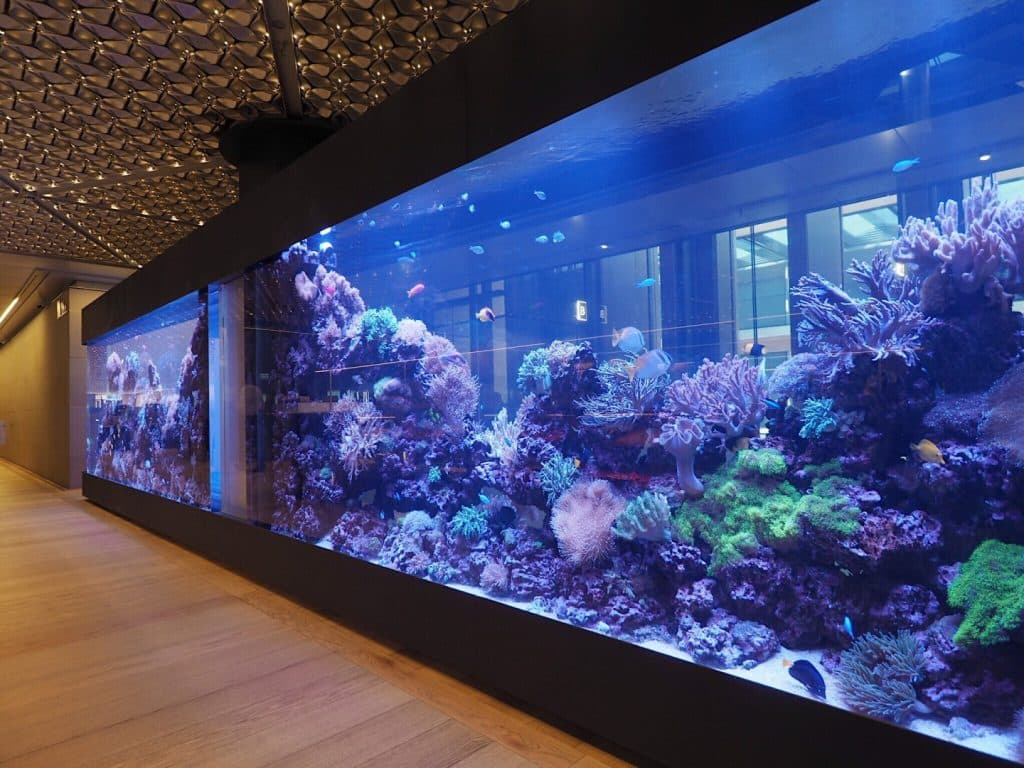
The New York Times Building in New York City illustrates how to create an excellent visual connection with nature, amid the craziness of Times Square. It has a carved-out space in the centre of the building, featuring a birch tree and moss garden, which all employees pass as they enter and leave the building.

I-MEX, Bury St Edmunds has undergone a spectacular COEL transformation, incorporating a state-of-the-art glass ceiling/floor between ground and mezzanine levels.
The Good Plant Company achieved a Gold Leaf Award for its inventive biophilic design here. Ruscha and her team added dramatic Kentia Palms in copper pots, tall Yuccas, a statement Musa and mixed Alaonema and Aspidistra, amongst other plants, which can be enjoyed from all floors thanks to the expanse of glass utilised in the design.

Jazz Pharmaceuticals (formerly GW Pharma) in Cambridge is another fantastic example of biophilia at work. COEL’s agile design and fit-out features a light-flooded kitchen with moss panelling, a cosy enclave to act as a ‘refuge’ for contemplative moments, gantry trailing plants creating a statement feature, plus a natural enriched colour palette of dark blues and greens, with pops of yellow.

Agile Analog in Chesterton have embraced the latest trend for cabinet-top planting. The Good Plant Company’s Ruscha, explains: “In the era of hotdesking, lockers are key to store employees’ personal items.
At Agile Analog we incorporated an inbuilt planter, covering the entire surface of the lockers, with spider plants, peperomia, and dracaena. It’s a good way of bringing in nature, but not taking up extra floorspace, plus wherever you sit in the office, you have a view of the planting.”

Final thoughts on Biophillia
Biophilia is such an important concept in office design to ensure that the inherent (and joyful) connection between humans and nature is not lost.
At COEL, we’re seeing more and more clients embrace this concept, recognising the multitude of benefits it can have on employee wellbeing.
As Ruscha concludes: “When we realise that the emotional and mental health of our employees is absolutely key, an investment in biophilic design makes sense and is necessary to achieve the feel-good factor.”
If you’re interested in incorporating biophilia in your office or laboratory design, get in touch for a chat with the friendly team at COEL.